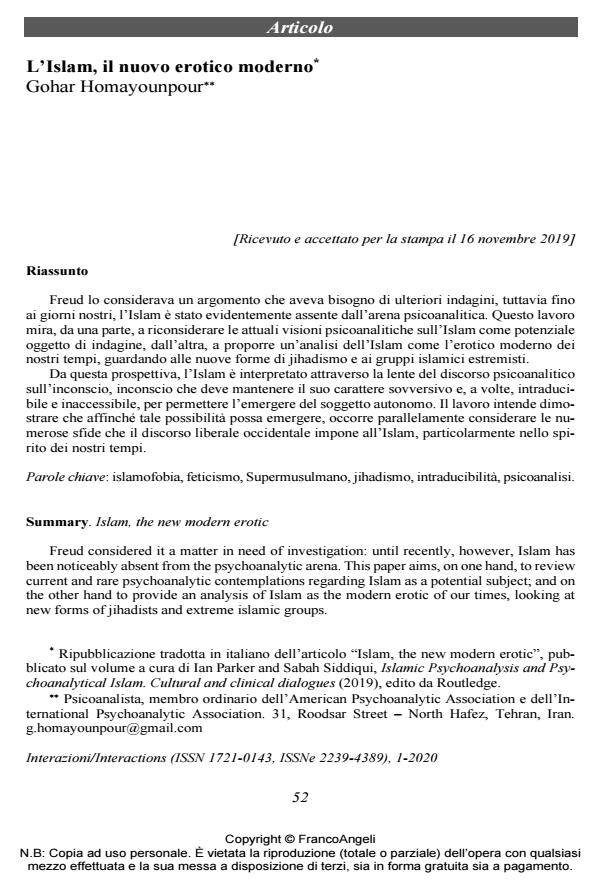Islam, the new modern erotic
Journal title INTERAZIONI
Author/s Gohar Homayounpour
Publishing Year 2020 Issue 2020/1
Language Italian Pages 15 P. 52-66 File size 198 KB
DOI 10.3280/INT2020-001004
DOI is like a bar code for intellectual property: to have more infomation
click here
Below, you can see the article first page
If you want to buy this article in PDF format, you can do it, following the instructions to buy download credits

FrancoAngeli is member of Publishers International Linking Association, Inc (PILA), a not-for-profit association which run the CrossRef service enabling links to and from online scholarly content.
Freud considered it a matter in need of investigation: until recently, however, Islam has been noticeably absent from the psychoanalytic arena. This paper aims, on one hand, to review current and rare psychoanalytic contemplations regarding Islam as a potential subject; and on the other hand to provide an analysis of Islam as the modern erotic of our times, looking at new forms of jihadists and extreme islamic groups. From this perspective, Islam is interpreted through the lens of a psychoanalytic discourse of the unconscious, one that must remain subversive and, at times, untranslatable and inacces-sible, to allow the emergence of the autonomous subject. As the paper will demonstrate, for such a possibility to emerge, it is also necessary to consider the challenges of a Western liberal discourse imposed on Islam from various fronts, and particularly within the spirit of our times.
Keywords: Islamophobia, fetishism, Surmusulman, jihadism, untranslatability, psychoanalysis
Gohar Homayounpour, L’Islam, il nuovo erotico moderno in "INTERAZIONI" 1/2020, pp 52-66, DOI: 10.3280/INT2020-001004